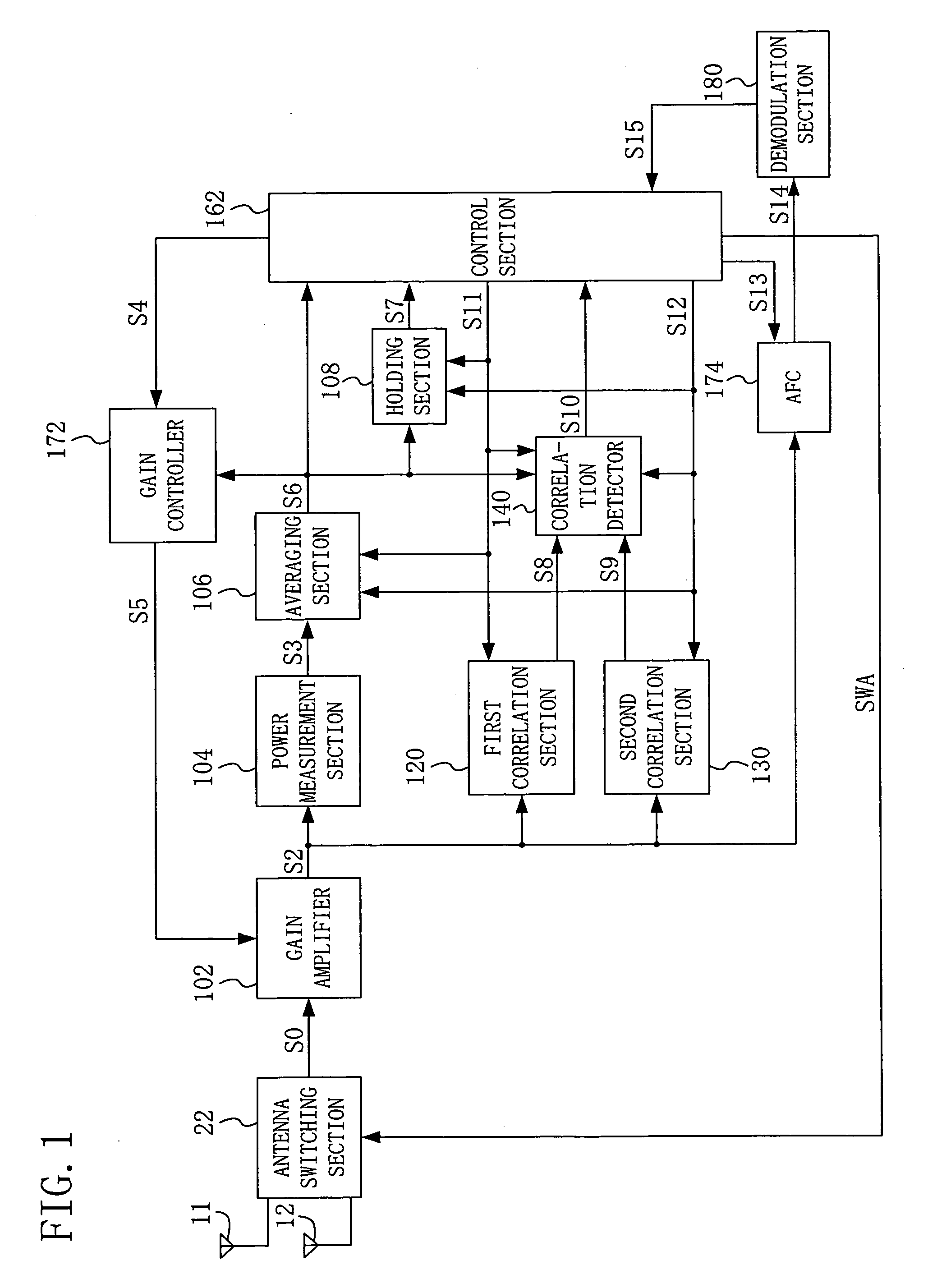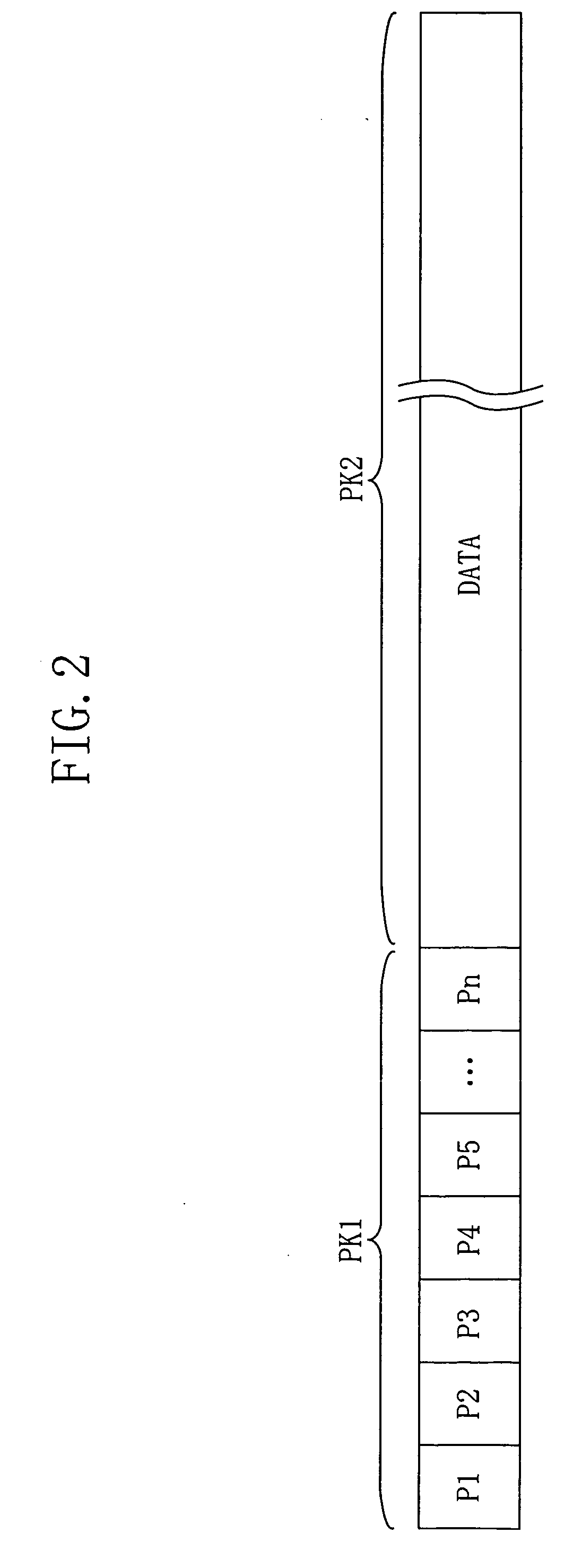Diversity receiver and diversity reception method
a receiver and diversity technology, applied in diversity/multi-antenna systems, polarisation/directional diversity, amplitude demodulation, etc., can solve the problems of inability to perform conventional structures, inability to compare power, and significant degradation of reception performance, etc., to achieve stable communication
- Summary
- Abstract
- Description
- Claims
- Application Information
AI Technical Summary
Benefits of technology
Problems solved by technology
Method used
Image
Examples
embodiment 1
[0048]FIG. 1 is a block diagram of a diversity receiver according to embodiment 1 of the present invention. The diversity receiver of FIG. 1 includes a gain amplifier 102, a power measurement section 104, an averaging section 106, a holding section 108, a first correlation section 120, a second correlation section 130, a correlation detector 140, a control section 162, a gain controller 172, an automatic frequency controller (AFC) 174, and a demodulation section 180. The diversity receiver of FIG. 1 selects any one of a first antenna 11 and a second antenna 12. More specifically, antenna selection signal SWA is generated for an antenna switching section 22 to select any one of signals received through the antennas 11 and 12.
[0049]FIG. 2 shows an example of a structure of a packet received by the diversity receiver of FIG. 1. The packet of FIG. 2 includes preamble part PK1 and data part PK2. Preamble part PK1 includes patterns P1, P2, . . . Pn (n≧2). Each of patterns P1, P2, . . . P...
embodiment 2
[0090]FIG. 13 is a block diagram of a diversity receiver according to embodiment 2 of the present invention. The diversity receiver of FIG. 13 includes a correlation detector 240 and a control section 262 in substitution for the correlation detector 140 and the control section 162 of the diversity receiver of FIG. 1 and further includes a correlation holding section 276. The other elements are the same as those illustrated with reference to FIG. 1 and hence denoted by the same reference numerals, and therefore, the detailed descriptions thereof are herein omitted.
[0091]FIG. 14 is a block diagram showing a structure of the correlation detector 240 of FIG. 13. The correlation detector 240 includes subtractors 245 and 246 and a selector 248 in addition to the components of the correlation detector 140 of FIG. 5.
[0092] In an effective period of first correlation process notice signal S11, the subtractor 245 subtracts average power value S30 from first correlation value S8 and outputs ...
PUM
 Login to View More
Login to View More Abstract
Description
Claims
Application Information
 Login to View More
Login to View More - R&D
- Intellectual Property
- Life Sciences
- Materials
- Tech Scout
- Unparalleled Data Quality
- Higher Quality Content
- 60% Fewer Hallucinations
Browse by: Latest US Patents, China's latest patents, Technical Efficacy Thesaurus, Application Domain, Technology Topic, Popular Technical Reports.
© 2025 PatSnap. All rights reserved.Legal|Privacy policy|Modern Slavery Act Transparency Statement|Sitemap|About US| Contact US: help@patsnap.com



